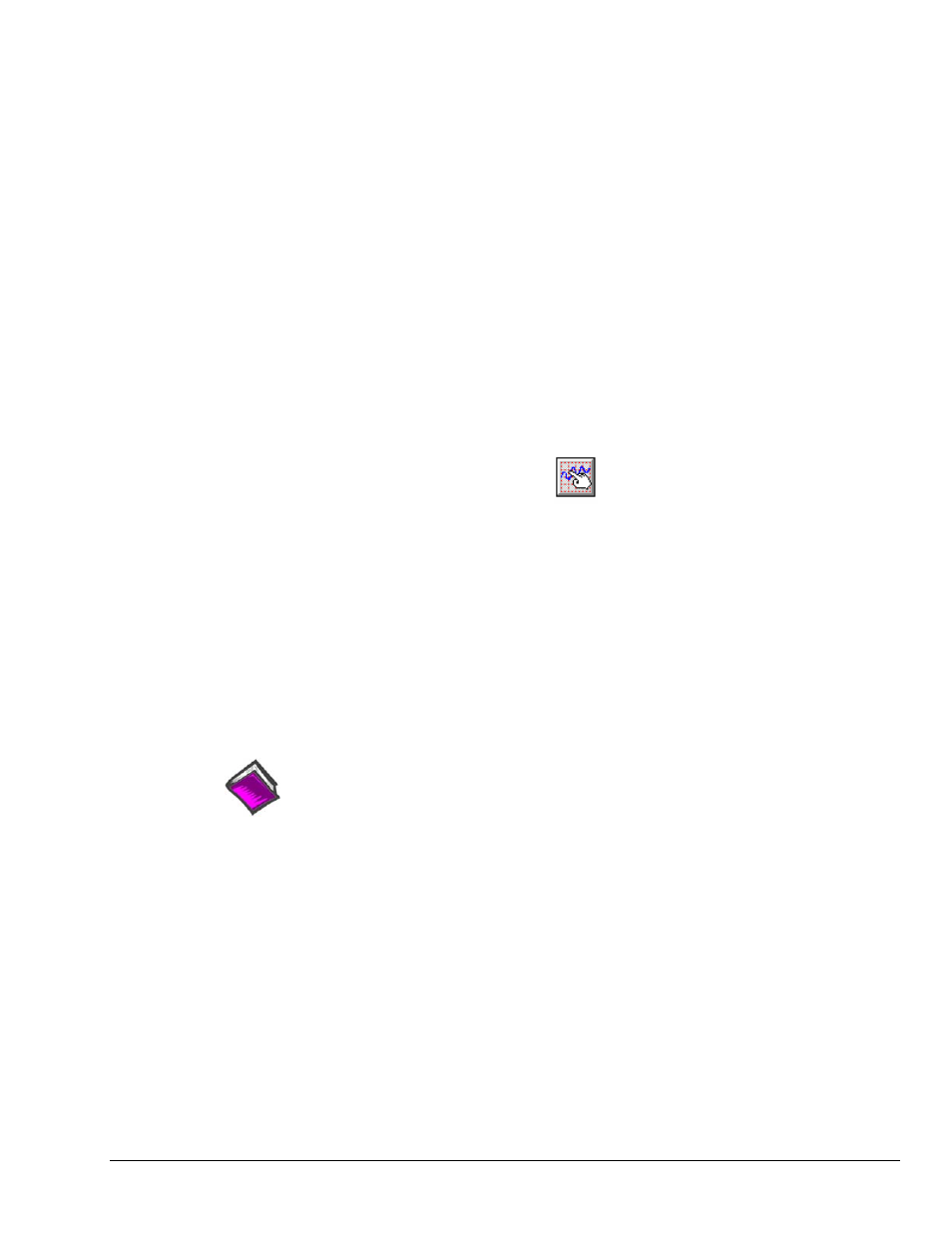Accessing the display configuration setup box – Measurement Computing Personal Daq rev.6.0 User Manual
Page 73

15
Multiply (x2), and
16 Divide
(÷2)
The Multiply(x2) push-button increases the size of the selected channel’s chart by a
factor of 2, while automatically adjusting the chart’s high and low values. Aside from
“clicking” on the Multiply/Divide controls, you can use your keyboard spacebar to
control this feature once the button (15 or 16) is selected. Selection may be with
mouse, or by tabbing over to the control.
Making changes to a channel’s chart parameters does not affect the parameters of
the other channels, with the following exception: Holding the keyboard’s control key
down while adjusting either spinner (V/W) for center (item 12), or spinner for
units/div (item 13) causes the parameter change to apply to all channels for the chart
(not just the currently selected channel display). This feature applies to the spinners
and keyboard up and down arrow keys, but not to the text input.
17 Scrolling
Time
Scrolling Time is turned On or Off from the Timestamp pull-down menu. Time
Stamp can be “absolute” (real time) or “relative.” Absolute time is based on your
computer clock, whereas relative time starts at 00:00:00 hours/minutes/seconds, and
then continues timing in increments relative to the Scroll Rate. The chart’s scroll rate
can be set in the chart’s Properties box, accessed through the Chart pull-down
menu. Also see Properties in the table on page 4-28.
18
Global Scroll Rate
The “global” scroll rate consists of a “time per division” value which can be changed
using the “faster” (rabbit) button or “slower” (turtle) button. Available Scroll Rates are
from 0.1 sec/div to 1 hour/div, as indicated in the table on page 4-29.
The “global” scroll rate is not necessarilly the same as the chart’s “actual” scroll rate
(as set in the chart’s Properties dialog box). The Properties box is accessed through
the Chart pull-down menu.
Accessing the Display Configuration Setup Box
The Set Up Charts button accesses a Display Configuration Setup dialog box. This box will also be
displayed if: a) you select Create Charts Manually during use of the Wizard Chart Setup program, b) you
select Setup from the Chart pull-down menu, c) you right-click on the chart region in Personal DaqView’s
Chart Display Window.
Note:
If multiple chart groups are present in the display configuration, the current group will be selected
in the display configuration tree.
When you first click on the Set Up Charts button, a Display Configuration Setup box appears. A display
region shows the configured structure of the groups, charts, and channels. From this box you can select the
number of charts to be assigned to a specific group. With the use of the mouse cursor you can also select a
chart or channel for additional editing. In addition to the text presented in the following sub-sections:
Normal Edit and Manually Creating a Display, you can refer to the Chart Setup Wizard section,
beginning on page 4-37.
Reference Note: For your very first chart display setup, or when the configuration file has been
deleted, refer to the Chart Setup Wizard section beginning on page 4-37.
The method you use to access the Display Configuration Setup window makes a difference. When you use
the toolbar button or the pull-down menu’s Setup selection, the Display Configuration Setup window
appears with the current chart display configuration intact. With this type of access you would simply edit
your existing chart display. Channel configurations do not change, with exception that newly displayed
channels will be enabled.
When you access the Display Configuration Setup from the Chart Setup Wizard, the Display Configuration
Setup window appears with no existing display. This allows for a “clean slate” approach to creating a chart
display, as opposed to an “editing” approach. Channel configurations do not change, with exception that
newly displayed channels will be enabled.
Personal Daq User’s Manual
989394
Personal DaqView 4-31
